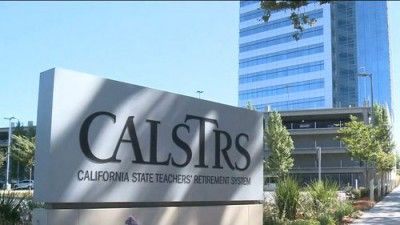LAO raises doubts about teachers’ pension bailout
by Chris Reed | February 11, 2016 6:35 am
 A new report[1] from the nonpartisan Legislative Analyst’s Office is raising questions about the long-term effectiveness of the Legislature’s 2014 bailout of the California State Teachers’ Retirement System, which will nearly double annual funding to cover CalSTRS’ obligations when it is completely phased in.
A new report[1] from the nonpartisan Legislative Analyst’s Office is raising questions about the long-term effectiveness of the Legislature’s 2014 bailout of the California State Teachers’ Retirement System, which will nearly double annual funding to cover CalSTRS’ obligations when it is completely phased in.
The bailout requires school districts, the state government and teachers to steadily increase their annual contributions to CalSTRS in coming years. The $5.9 billion in 2014 funding for CalSTRS’ future unfunded liabilities ramps up to nearly $11 billion in fiscal 2020-21, with school districts providing 70 percent of the extra funds, 20 percent coming from the state general fund and 10 percent from teachers.
The report is only the latest[2] from the LAO to raise concerns about how the bailout is being implemented. But it offers a particularly serious warning: Even though the 2014 law sharply increases the amount of money that must be set aside for long-term pension costs, it may not reduce long-term state liabilities:
Over the long term, if investments consistently underperform assumptions — or if CalSTRS reduces its investment return assumption — the state’s share of the unfunded liability could increase substantially and state contributions could be several billion dollars higher by the 2040s. As implemented, districts would be largely insulated from large unfunded liabilities under these bad investment scenarios. While there are pros and cons to the implementation — both from the perspective of the state and districts — we are unsure that these are the outcomes the Legislature intended when it passed the CalSTRS funding plan into law.
The concern about low returns has been an increasing focus both of pension systems and financial rating firms. Early last year, when Standard & Poor’s raised California’s credit rating because of its improved revenue picture and relatively tight budgets, it also warned that “the state teachers’ retirement system (CalSTRS) is in need of a long-term funding strategy.”
Life expectancy increase may balloon liabilities
Another factor has CalSTRS officials worried, as Ed Mendel reported this week[3] on calpensions.org:
Last week, the CalSTRS board was told that the life spans of retirees have been increasing faster than anticipated. Two years ago CalPERS increased employer rates to cover longer life spans expected for its retirees.
Rick Reed, CalSTRS chief actuary, said the same mortality table has been used for persons age 20 and age 60. A weighted average tends to estimate a life span that is too long for the 60-year-old and too short for the 20-year-old.
With new computer technology, Reed said, it’s possible to have a mortality table for each individual for each year. For a person age 20, there would be 70 mortality tables by age 90.
Such technology will also make it easier to track the unpward arc in unfunded liabilities because retirees are living longer.
The double whammy of low investment returns and increased life expectancy has already had a harsh impact on San Francisco. The Chronicle reported [4]in December that these factors had badly undercut hopes that Proposition C, a 2011 pension reform approved by voters, would deliver big savings:
Numbers crunchers say the pension payout for retired government workers could grow to $380 million a year from the city’s general fund by 2019. That’s $113 million more than was projected just last year. … Of the $99 million deficit that the city will have to eliminate by the start of the fiscal year July 1, $42 million is attributable to more going out in pensions than the city is taking in from the fund’s investments. …
Retirees are living longer than expected — and investments are coming in with only a 4 percent return versus the 7.5 percent that actuaries had predicted.
- new report: http://www.lao.ca.gov/Publications/Report/3339
- only the latest: http://www.lao.ca.gov/Education/Teachers/CalSTRS
- this week: https://calpensions.com/2016/02/08/calstrs-gets-new-power-to-set-state-school-rates/#comments
- reported : http://www.sfchronicle.com/bayarea/matier-ross/article/Skyrocketing-pension-costs-putting-S-F-in-the-red-6680080.php
Source URL: https://calwatchdog.com/2016/02/11/lao-raises-doubts-teachers-pension-bailout/